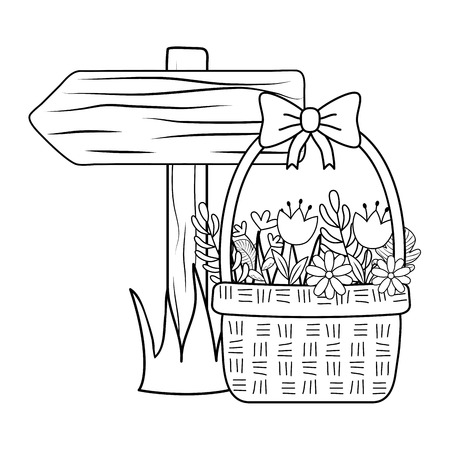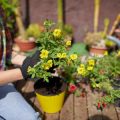1. Understanding Pollinator Gardens
Pollinator gardens are special spaces designed to attract and support pollinators like bees, butterflies, hummingbirds, and even bats. These gardens are more than just pretty landscapes—they are essential for healthy ecosystems, especially across North America. As climate change creates new challenges, understanding the basics of pollinator gardens is more important than ever.
What Are Pollinator Gardens?
A pollinator garden is a collection of plants that provide food (nectar and pollen) and habitat for pollinating animals. Unlike traditional ornamental gardens, pollinator gardens focus on native plants that naturally thrive in the local environment and best meet the needs of local pollinators.
Key Features of a Pollinator Garden
| Feature | Description |
|---|---|
| Diverse Plant Selection | Includes a variety of flowering plants with different colors, shapes, and bloom times |
| Native Plants | Focuses on species naturally found in your region to better support local wildlife |
| Pesticide-Free Zone | Avoids harmful chemicals that can hurt pollinators |
| Continuous Bloom | Ensures flowers are available throughout the growing season—from spring to fall |
| Shelter & Water Sources | Provides places to hide and shallow water for drinking or bathing |
The Benefits of Pollinator Gardens
- Supports Wildlife: Helps bees, butterflies, birds, and other vital pollinators survive and thrive.
- Boosts Food Production: Many fruits and vegetables rely on pollinators for successful harvests.
- Enhances Biodiversity: Attracts a range of insects and animals, making your garden lively and resilient.
- Promotes Environmental Health: Reduces chemical use and supports soil health.
- Adds Beauty: Offers colorful blooms all season long while connecting you to nature.
The Role of Pollinator Gardens in North American Ecosystems
In the United States, native pollinators face increasing threats from habitat loss, pesticides, disease, and changing weather patterns caused by climate change. By planting a pollinator garden with native species like milkweed for monarch butterflies or bee balm for native bees, you help create essential waystations where these creatures can find food and shelter. Even small backyard gardens make a big difference when communities work together across neighborhoods and cities.
2. Impacts of Climate Change on Pollinators
As the climate continues to change, pollinator gardens face new challenges that can affect both pollinators and the plants they depend on. Understanding these impacts helps gardeners make informed decisions to support local wildlife and keep their gardens thriving.
How Weather Patterns Are Shifting
Across the United States, unusual weather patterns—like warmer winters, earlier springs, and unexpected frosts—are becoming more common. These changes can throw off the natural timing between flowers blooming and pollinators like bees, butterflies, and hummingbirds being active. When flowers open too early or too late, pollinators may miss their main food sources.
Extended Droughts and Water Stress
Droughts are lasting longer in many regions, especially in the West and Southwest. Less rainfall means less nectar for pollinators, fewer blooming flowers, and stressed plants that might not survive. This affects pollinator populations because they rely on a steady supply of healthy flowers for food.
Common Effects of Drought on Gardens and Pollinators
| Impact | Effect on Plants | Effect on Pollinators |
|---|---|---|
| Reduced Rainfall | Stunted growth, fewer blooms | Less nectar/pollen available |
| Hotter Temperatures | Increased plant stress, wilting | Dehydration risk for insects; less active during hottest parts of day |
| Irrigation Limits | Difficulty maintaining garden diversity | Narrowed food choices for pollinators |
Increasing Temperatures and Their Effects
Rising temperatures mean some plant species may no longer thrive in their traditional zones. At the same time, pollinators can become overheated or forced to shift their ranges northward or to higher elevations. This disrupts the balance between native plants and the pollinators adapted to them.
Examples of Temperature-Related Changes in US Gardens
- Bumblebees: Struggling in southern states due to extreme heat; populations moving north.
- Migratory butterflies: Earlier arrivals may find fewer flowers in bloom.
- Native wildflowers: Some may not survive hotter summers without extra care.
Why It Matters for Gardeners
If you want your garden to continue supporting bees, butterflies, hummingbirds, and other pollinators, its important to recognize how climate change is shifting the environment. By staying aware of these changes, you can choose resilient plants and adapt your gardening practices to help both plants and pollinators thrive—no matter what the weather brings.

3. Choosing Climate-Resilient Native Plants
As climate patterns shift, selecting the right plants for your pollinator garden is more important than ever. Focusing on native species that are well-adapted to your local environment helps ensure your garden can handle temperature swings, droughts, and unpredictable weather—all while providing vital food and shelter for pollinators throughout the year.
Why Native Plants Matter
Native plants are naturally suited to the soils, rainfall, and temperatures of your region. They’ve evolved alongside local pollinators like bees, butterflies, and hummingbirds, making them the best choice for supporting these species. Plus, native plants usually need less water and care than non-native varieties—a win for both gardeners and the environment.
How to Choose Climate-Resilient Natives
1. Know Your Region
Start by identifying your USDA Plant Hardiness Zone and understanding recent climate trends in your area. This will help you pick plants that can survive both current and future conditions.
2. Look for Drought-Tolerant Options
With hotter summers and less predictable rainfall becoming common across much of the U.S., it’s smart to choose species that can handle dry spells without constant watering.
3. Plan for Year-Round Blooms
Select a mix of early, mid, and late-season bloomers so pollinators have a steady supply of nectar and pollen no matter what the weather brings.
Examples of Climate-Resilient Native Plants by Region
| Region | Spring Bloomers | Summer Bloomers | Fall Bloomers |
|---|---|---|---|
| Northeast | Wild Columbine (Aquilegia canadensis) |
Purple Coneflower (Echinacea purpurea) |
New England Aster (Symphyotrichum novae-angliae) |
| Southeast | Coreopsis (Coreopsis lanceolata) |
Black-Eyed Susan (Rudbeckia hirta) |
Goldenrod (Solidago spp.) |
| Midwest | Prairie Smoke (Geum triflorum) |
Butterfly Milkweed (Asclepias tuberosa) |
Aromatic Aster (Symphyotrichum oblongifolium) |
| Southwest | Desert Marigold (Baileya multiradiata) |
Purple Sage (Salvia dorrii) |
Copper Globemallow (Sphaeralcea angustifolia) |
| West Coast | California Poppy (Eschscholzia californica) |
Cleveland Sage (Salvia clevelandii) |
Mugwort (Artemisia douglasiana) |
Tips for Success
- Diversify: Include a variety of flower shapes, sizes, and colors to attract different types of pollinators.
- Avoid Chemicals: Skip pesticides and herbicides to keep your garden safe for bees and butterflies.
- Add Host Plants: Remember that many pollinators need specific host plants for their larvae—milkweed for monarchs is just one example.
- Monitor & Adjust: Watch how your plants perform through changing seasons, and don’t be afraid to try new species as conditions shift over time.
4. Adapting Garden Practices for Resilience
Water Conservation Techniques
With unpredictable rainfall and longer dry spells, saving water is more important than ever in your pollinator garden. Consider these strategies to help conserve water:
| Technique | Description |
|---|---|
| Drip Irrigation | Delivers water directly to the roots, minimizing evaporation and runoff. |
| Rain Barrels | Collects rainwater from your roof to use during dry periods, reducing reliance on municipal water. |
| Watering Early or Late | Water in the early morning or late evening to reduce evaporation losses. |
Mulching for Moisture and Protection
Mulch acts as a protective blanket over your soil. It helps retain moisture, keeps roots cool, and suppresses weeds—all vital benefits as climate conditions shift. Use organic mulches like shredded bark, straw, or leaf mold for the best results. Apply a 2-3 inch layer around plants, but keep mulch a few inches away from stems to prevent rot.
Improving Soil Health
Healthy soil is key to a resilient pollinator garden. Climate change can stress plants, so strong roots and healthy microbes are essential. Here’s how you can build better soil:
- Add compost regularly to boost nutrients and beneficial organisms.
- Avoid over-tilling, which disrupts soil structure and life.
- Plant cover crops like clover during the off-season to enrich soil naturally.
Eco-Friendly Pest Control Solutions
Rising temperatures can mean new pests or more frequent outbreaks. Eco-friendly pest control methods protect both your pollinators and the environment:
| Pest Problem | Sustainable Solution |
|---|---|
| Aphids & Mites | Introduce ladybugs or lacewings as natural predators. |
| Caterpillars & Beetles | Hand-pick pests off plants or use floating row covers for protection. |
| Disease Issues | Select disease-resistant plant varieties and space them properly for good airflow. |
| General Prevention | Avoid synthetic pesticides; try neem oil or insecticidal soaps when needed. |
Practical Tips for Everyday Gardeners
- Group plants with similar water needs together for efficient watering.
- Keep an eye out for signs of stress (wilting, leaf discoloration) and adjust care accordingly.
- Diversify plant species to support a wider range of pollinators and increase resilience against changing weather patterns.
- Create small brush piles or leave some bare ground to provide habitat for native bees and other helpful insects.
Your garden can thrive despite climate change—by adapting your practices, you’ll help pollinators flourish too!
5. Building Community and Advocacy
Get Involved in Community Science Projects
One of the best ways to support pollinators and adapt your garden to climate change is by joining community science projects. These programs let you work with others to collect data, monitor local pollinator populations, and contribute to real scientific research. Here are some popular options in the United States:
| Project Name | How to Participate | Website |
|---|---|---|
| The Great Sunflower Project | Observe pollinators on sunflowers and record what you see | greatsunflower.org |
| Bumble Bee Watch | Take photos of bumble bees and upload them for ID and tracking | bumblebeewatch.org |
| Monarch Watch | Tag monarch butterflies, plant milkweed, and report sightings | monarchwatch.org |
Advocate for Pollinator-Friendly Policies
Your voice matters! You can help shape local policies that protect pollinators and make neighborhoods more resilient to climate change. Here’s how you can get started:
- Attend city council meetings: Bring up topics like reducing pesticide use or planting native flowers in public spaces.
- Sign petitions: Look for campaigns that support banning harmful chemicals or preserving green spaces.
- Connect with local organizations: Groups like garden clubs or native plant societies often work on advocacy projects.
- Contact your representatives: Send emails or make phone calls to share why pollinator protection is important to you.
Share Resources in Your Neighborhood
Working together as a community makes a big difference for pollinators. Here are some simple ways to spread the word and help others join in:
- Create a seed library: Set up a box with free native flower seeds for neighbors to take home.
- Host a garden tour: Invite others to see your pollinator-friendly garden and learn how they can start their own.
- Print and share flyers: Use easy-to-read guides about which plants help bees, butterflies, and other pollinators.
- Start a social media group: Share tips, photos, and updates about local blooms and pollinator sightings.
Together, Small Actions Add Up!
No matter where you live, building a network of people who care about pollinators will help gardens thrive even as our climate changes. Every observation shared, policy supported, or neighbor inspired creates a ripple effect that helps protect these vital species for future generations.


